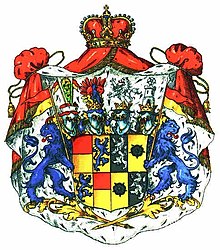
Solms-Baruth was a Lower Lusatian state country, from 16th century until 1945.

Solms-Baruth was a Lower Lusatian state country, from 16th century until 1945.

The House of Solms [1] had its origins at Solms, Hesse, and ruled several of the many minor states of the Holy Roman Empire. These lost their independence in the German Mediatization of 1806.
Later the Baruth branch also purchased the estates of Golßen and Casel in the March of Lusatia and, in 1767, Kliczków Castle (Klitschdorf) in Silesia which became their main seat. They owned Baruth and the other estates from 1615 to 1945 (when they were expropriated in communist East Germany), including the manor houses, ten villages and about 15,000 hectares of agriculture and forestry land.
In 1635, the March passed from the Kingdom of Bohemia to the Electorate of Saxony which in 1806 became the Kingdom of Saxony, with the counts of Solms-Baruth occupying a hereditary seat in the Saxonian Landtag. In 1815, when Saxony was punished at the Congress of Vienna for its loyalty to Napoleon by the confiscation of a significant part of its territory, the March of Lusatia, including Solms-Baruth, was transferred to the Kingdom of Prussia. The Prussian representative at the Congress was Prince Karl August von Hardenberg and his assistant, Count of Solms-Sonnewalde. The Counts of Solms-Baruth were granted a seat in the Prussian House of Lords, until the German Revolution of 1918–1919. Count Friedrich zu Solms-Baruth (1821–1904) was elevated to the hereditary rank of a Fürst (Prince) by the King of Prussia in 1888. Prince Friedrich zu Solms-Baruth (1886–1951) was not a member of the Kreisau Circle, dissidents who opposed Hitler's Nazi regime.
Solms-Laubach was a County of southern Hesse and eastern Rhineland-Palatinate, Germany. The House of Solms had its origins in Solms, Hesse.

Solms-Hohensolms-Lich was at first a County and later Principality with Imperial immediacy in what is today the federal Land of Hessen, Germany. It was ruled by a branch of the House of Solms, originally from Solms.

Solms-Braunfels was a County and later Principality with Imperial immediacy in what is today the federal Land of Hesse in Germany.
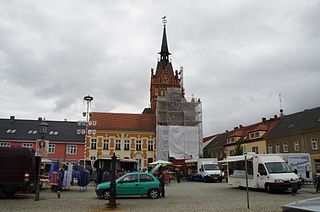
Golßen or Golssen is a town in the district of Dahme-Spreewald, in Brandenburg, Germany. It is the administrative seat of the Amt Unterspreewald.
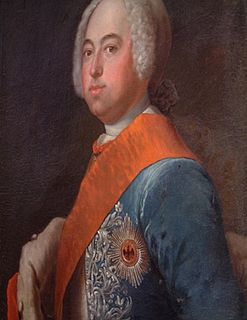
Victor Frederick of Anhalt-Bernburg, was a German prince of the House of Ascania. He was Reigning prince of the principality of Anhalt-Bernburg from 1721 to 1765.

Princess Adelaide Louise of Schleswig-Holstein-Sonderburg-Glücksburg was a daughter of Friedrich Ferdinand, Duke of Schleswig-Holstein and his wife Princess Karoline Mathilde of Schleswig-Holstein-Sonderburg-Augustenburg.
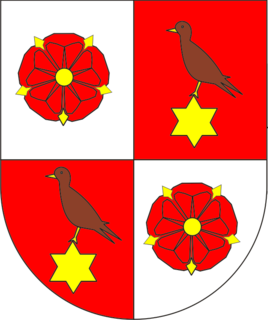
The House of Lippe-Weissenfeld is one of the junior branches of the House of Lippe, a dynasty ruling the Principality of Lippe until the German Revolution of 1918–19.
Princess Karoline Mathilde of Schleswig-Holstein-Sonderburg-Glücksburg was a member of the House of Schleswig-Holstein-Sonderburg-Glücksburg and Princess of Schleswig-Holstein-Sonderburg-Glücksburg by birth and a member of the House of Solms Baruth and Countess of Solms Baruth through her marriage to Count Hans of Solms-Baruth.
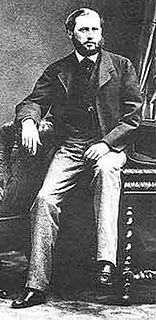
Otto Grafzu Stolberg-Wernigerode was an Imperial German politician and the vice-chancellor of the German Empire.
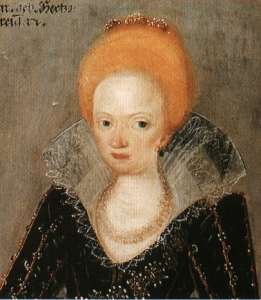
Marie of Prussia was a Prussian duchess by birth and Margravine of Brandenburg-Bayreuth by marriage.

Karl Ludwig, 3rd Prince of Hohenlohe-Langenburg was the third Prince of Hohenlohe-Langenburg. He was the first child of Prince Christian Albert of Hohenlohe-Langenburg and his wife, Princess Caroline of Stolberg-Gedern.

Count Frederick of Solms-Rödelheim was an imperial chamberlain, war councillor and colonel in the period of the Thirty Years' War.
Prince Charles Ferdinand William of Solms-Lich-Hohensolms was a German politician. He was president of the First Chamber of the Estates of the Grand Duchy of Hesse.
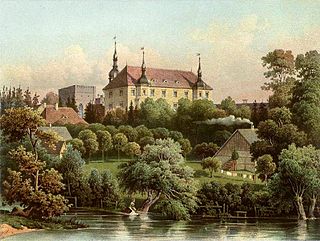
Kliczków Castle is located in Kliczków in Poland. It was owned by the Solms-Baruth dynasty until 1942.

Ferdinand Wilhelm Ernst, 2nd Prince of Solms-Braunfels was the second Prince of Solms-Braunfels. He was the son of Frederick William, Prince of Solms-Braunfels (1696–1761) by his first wife Princess Magdalena Henrietta of Nassau-Weilburg (1691–1725).